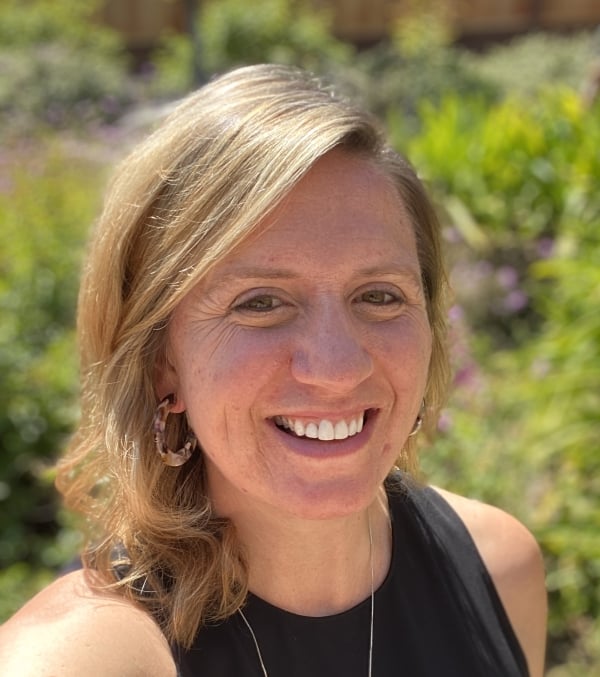You have /5 articles left.
Sign up for a free account or log in.
Cassidy Dadaos is a director of university partnerships at Coursera, where she’s worked for over half a decade. Before making the pivot to ed tech, Cassidy worked in academia. Below, she graciously shares the lessons she’s learned along the way—as well as advice for those looking to follow in her footsteps.

Q: Tell me more about your role at Coursera. What’s your day-to-day like? And how does it differ from or meet your expectations of the job when you joined?
A: Thank you so much, Josh, for inviting me to answer your questions. I’ve been a loyal reader of IHE and your blog, and it’s a privilege to share my experiences.
I joined Coursera more than six years ago as a university partnership manager. In that role, I worked closely with many of Coursera’s North American University partners to identify and pursue opportunities for new content development on the platform while also helping them optimize their existing portfolios. Last summer, I took on a new role as director of university partnerships, in which I lead a team of stellar partnership managers who focus on ensuring our partners’ content portfolios are reaching their full potential on the platform and impacting learners in meaningful ways.
Part of the fun of the job is that my responsibilities often look very different on a daily basis. One day I might be speaking with a dean or university administrator about how we can work together to create more learning opportunities on the platform for women, with the broader intention of closing the STEM gap. The next day, I might be working with my team and colleagues in Teaching and Learning to understand and translate the most pedagogically sound way for a partner to teach data science content online. It’s a great balance between tactical and strategic work, and I love that I get to spend so much of my time growing relationships with senior members of our partner community. These relationships and conversations really allow me to embrace their vision, strategy and portfolio potential on Coursera—and enable me to truly act as their advocate.
My actual experience has differed dramatically from my original expectations of the role. I was drawn to Coursera for the same reason many are: its vision of a world where anyone, anywhere, has the power to transform their lives through learning. But I underestimated how that would show up in the work day to day and how personally tied I’d feel to the idea that we can create change by creating access.
I have loved the opportunity to truly build things that drive towards that vision, and so many of my favorite efforts over the years started as strategic projects but developed into passion projects. For example, back in May 2020, I worked closely with Johns Hopkins University to develop, launch and promote an incredibly timely and important COVID-19 Contact Tracing course from the Bloomberg School of Public Health. In barely two weeks, we had to figure out how to get the content to the platform as fast as possible and then maximize the impact and reach of the course during an intense and scary time in the world. It was so personally rewarding to see it swiftly reach more than a million learners globally, in a moment when access to that information was so desperately needed.
Over the last six years, it feels as if I’ve really grown both at and with Coursera. And while the world has changed drastically, our mission and vision have remained the same. It has been the constant. I think this is a real testament to the people at Coursera—I am consistently astounded by what a bright, thoughtful and driven group of people I get to work with. These colleagues, the partners I collaborate with (and learn from!) and the lives we are changing together are what drive me to make an impact every single day.
Q: What was the transition like moving from managing partnerships at NYU to managing partnerships at an ed-tech company? How does that experience guide your approach to your work now?
A: I made the leap from New York University, the largest private university in the United States, to Coursera, a scrappy, fast-moving “start-up” in Silicon Valley, in early 2017. And suffice to say, I really felt the change. It was a move from a nearly 200-year-old institution with a methodical and defined way of operating to a four-year-old ed-tech company that was in a moment of rapid growth and change. I worked hard and fast, with the help of my new colleagues, to understand our core value proposition to partners and learners, the differentiators across our product portfolio, and the definitions behind new tech jargon and never-ending acronyms.
The constant for me, both then and now, was my engagement with our incredible university partners; my six years at NYU really primed me to understand perspectives and priorities across different campuses relatively quickly. During that time, I gained insight into the traditional and political hierarchies that exist and the ways in which different schools and stakeholders can have very different goals, even within the same university system. I also gained a sense of the pace of a university and the speed at which they may or may not move.
A huge part of my responsibility now is to try to be a bridge between our partners and our business and I am always aiming to align priorities between the two. I feel uniquely positioned to anticipate areas of friction, empathize with challenges, identify stakeholder mapping and advocate for my university partners internally at Coursera, all because of my lived experience at NYU.
Q: What are some of the best lessons you’ve learned in your career, and what advice would you share for anyone looking to pivot from higher ed to ed tech?
A: In recent years, I’ve spent a lot of time thinking about the importance of being your authentic self, no matter the moment you are in. It took me a while to feel comfortable with this idea; earlier in my career, I’d be very uncomfortable saying, “I don’t know,” or showing real vulnerability in the workplace. I thought I had to have it all figured out—to actively be the expert, or at least pretend to be.
I’ve learned, especially in the last 10 years or so, that it is okay to authentically own your strengths and your areas for improvement. My career path so far has been nonlinear—I’ve taken steps forward, backwards, sideways. Over the course of those transitions, I’ve been reminded of the power of team and the importance of people having different superpowers and leaning into them. One of my closest colleagues and teammates at Coursera is an incredible data manipulator, whereas I love to write. Over the years, she and I have figured out how to divide and conquer many projects and tasks just based on our understanding of where each other thrives!
Mind shifts like that have really helped me protect my most valuable and nonrenewable resource—my minutes. I’ve found this resource to be even more precious as a working mom! I am always trying to ensure that the way I spend my minutes will genuinely drive value to my life, to our business and to those that are important to me. The recognition of my strengths and my increasing level of comfort in owning them has made me excited to double down on them in different ways. I recently learned how to improve my writing from the University of Colorado, Boulder, and am currently working on becoming a more strategic leader with guidance from Dartmouth. The time you spend bettering yourself now will save you time down the road—and of course, it helps to work at a learning company that really encourages upskilling.
I also would urge folks to stretch beyond their day-to-day portfolio of work and see where else they can drive impact or get involved. Projects like this have been some of the greatest sources of growth, learning and joy for me. For nearly five years, I co-led our Women@Coursera Employee Resource Group, which allowed me to work with people across the company I would never have connected with. It also gave me a chance to more deeply understand different parts of the business and learn about areas far outside my normal expertise or wheelhouse. What might feel like an added project or effort in the short term may end up driving real positive change while simultaneously teaching you valuable leadership skills.
Finally, for anyone thinking about making a pivot from higher ed to tech, I’d encourage you to keep an open mind, be comfortable with your curiosity and really own the experience you have. There is so much to absorb in this quickly evolving environment—do not be shy to ask questions about how things piece together or how things are developing. Over the years, I’ve learned to be more straightforward with my curiosity. I’ve learned that I belong here, despite my lack of prior tech experience, and have become comfortable taking a seat at the table. I am excited to continue to own my expertise and knowledge and ask a million questions to fill in the gaps that still exist. It’s such an exciting time to be a part of this ecosystem as we determine new post-COVID norms, think about leveraging technologies like ChatGPT and see increasing openness to hybrid learning. I can’t wait to see what comes next for Coursera, our university partners and the industry at large!




